The Puerh Tea Production Process: From Leaf to Cup in the Lincang Region of Yunnan
Puerh tea, especially Sheng Puerh (raw Puerh), is a revered type of tea with a rich, complex flavor profile. Grown in the lush mountains of Yunnan, particularly in the Lincang region, Puerh tea is unique not only for its deep flavor but also for its intricate and time-honored production process. In this article, we will walk you through the detailed steps involved in Puerh tea production and explore the distinctive characteristics of Puerh tea, particularly from the Lincang area.
1. Harvesting the Tea Leaves
The first step in the Puerh tea production process begins with the careful harvest of the tea leaves. The best Puerh tea comes from old, wild tea trees, many of which are hundreds of years old. These ancient trees are found in the mountainous regions of Yunnan, where they thrive in the cool, misty climate and fertile soil.
In the Lincang region, the ideal time for harvesting is during the early spring when the tender, young buds are plump and full of nutrients. Workers pick only the top two leaves and the bud, which are the most flavorful and aromatic parts of the plant.
2. Withering
Once the leaves are plucked, they are spread out in thin layers on bamboo mats or large trays to begin the withering process. This is a crucial step in Puerh tea production, where the moisture content of the leaves is reduced, and they begin to soften. In the Lincang region, withering often occurs under natural sunlight, allowing the tea leaves to slowly lose their moisture while retaining their freshness and aroma.
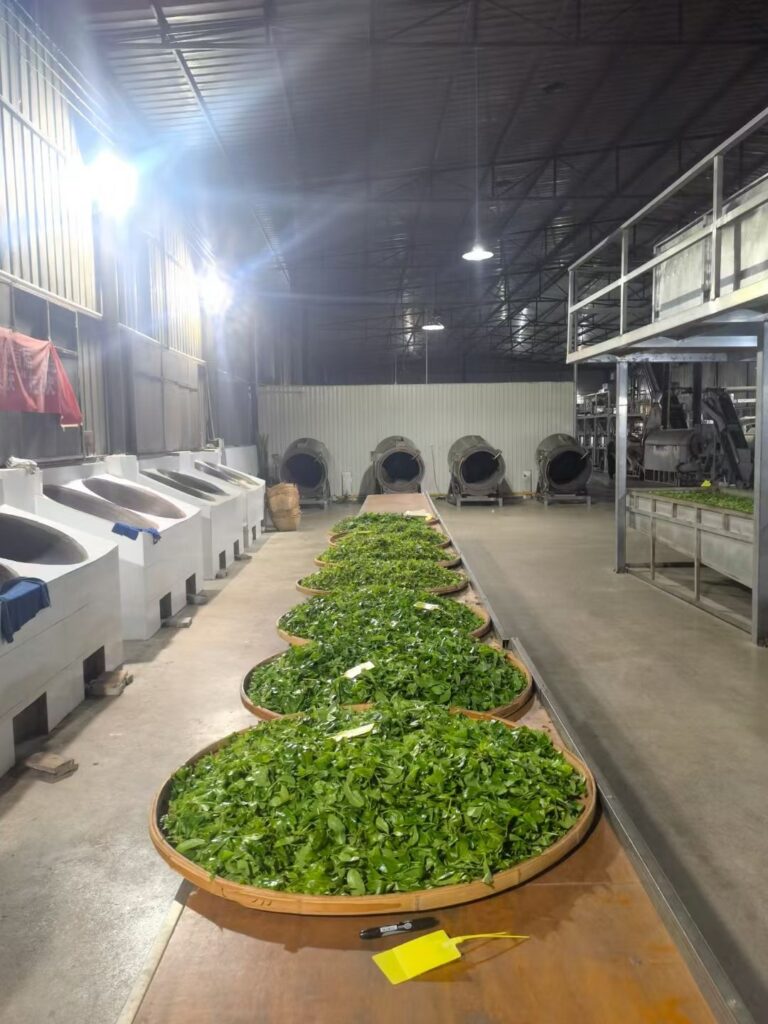
The leaves are left to wither for several hours, depending on the humidity and temperature. This step is important because it prepares the leaves for the next stage of production while allowing their inherent flavors to develop.
3. Fixation (Shāqīng)
The next step in Puerh tea production is fixation (杀青), where the tea leaves are briefly steamed or pan-fired to halt oxidation. This step is critical because it prevents the leaves from turning into black tea and preserves their delicate, fresh flavors.
In Lincang, traditional Puerh tea is often fixated by pan-frying in large iron woks over an open flame. This process imparts a unique flavor to the leaves while also maintaining their vibrant green color. The fixation process helps to lock in the tea’s freshness and prepares it for rolling and shaping.
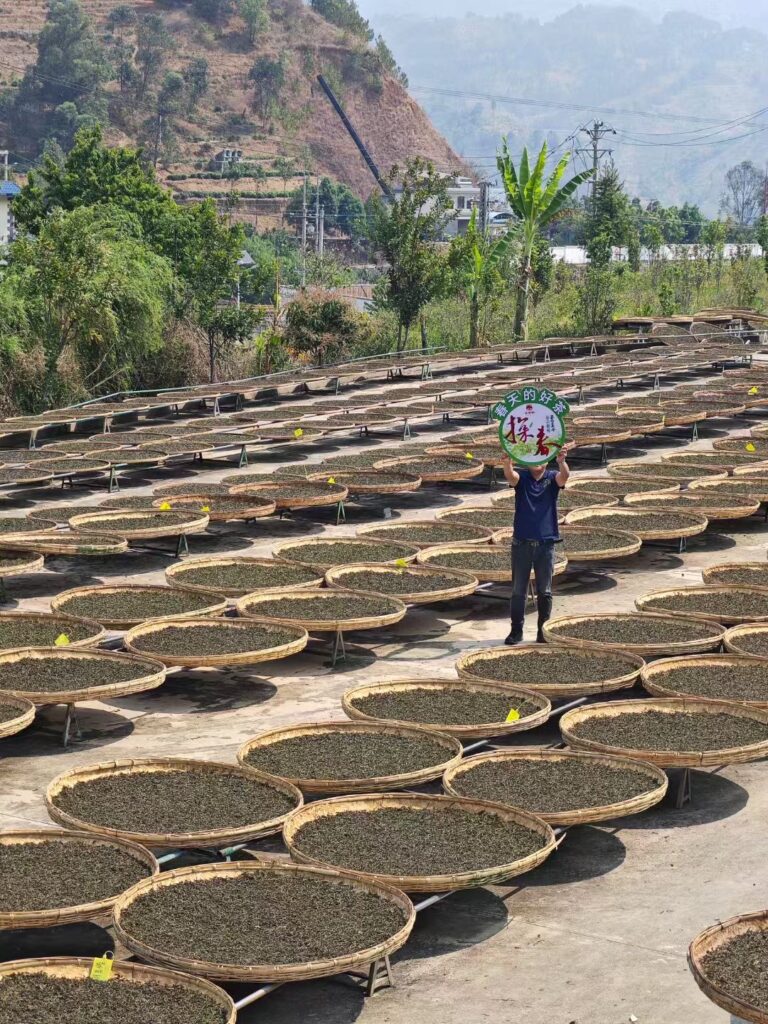
4. Rolling and Shaping
After fixation, the Puerh tea leaves are gently rolled and shaped. This step is done either by hand or using machines, depending on the scale of production. The rolling process helps to break down the cell walls of the tea leaves, allowing the essential oils to be released and enhancing the flavor profile of the tea.
In the Lincang region, rolling is done carefully to preserve the integrity of the leaves, ensuring that they remain whole and intact. The leaves are rolled into long, slender shapes that will help them release their complex flavors when brewed.
5. Drying
After rolling, the Puerh tea is dried to remove any remaining moisture. In Lincang, this step is often done in the shade or with a gentle drying process to preserve the tea’s flavor and aroma. Traditional methods of drying, such as sun-drying or using low-temperature ovens, ensure that the tea retains its freshness without becoming overly dry or brittle.
The drying process can take several days, and it is essential that the tea leaves are regularly turned to ensure even drying. Once dried, the leaves are ready for storage or further aging, depending on the type of Puerh tea being produced.
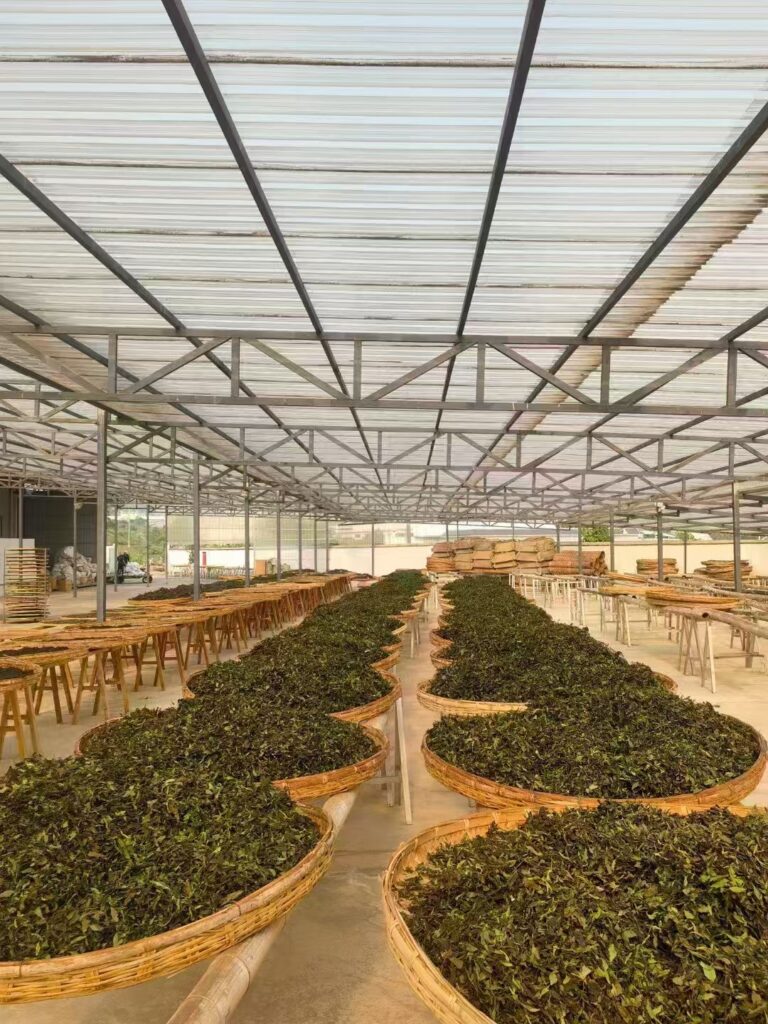
6. Aging and Fermentation (For Sheng Puerh)
One of the most unique aspects of Puerh tea production is the aging process. Sheng Puerh, in particular, undergoes a natural fermentation process over time. In the Lincang region, some of the best Sheng Puerh is carefully stored in a controlled environment for several months or even years, allowing the flavors to evolve and mature.
As Sheng Puerh ages, it undergoes a transformation—becoming smoother, more complex, and developing earthy, woody, and floral notes. The aging process is essential in creating the deep, nuanced flavors that Puerh tea is known for. The longer the tea is aged, the more mellow and refined the taste becomes.
7. Packaging and Storage
Once the Puerh tea is fully processed and aged, it is carefully packed and stored. For Sheng Puerh, the tea is often compressed into cakes (known as bings), bricks, or tuocha (small compressed nests). These compressed forms not only preserve the tea but also enhance its aging potential. The tea is stored in a dry, well-ventilated environment to continue its natural aging process.
In Lincang, tea makers pay special attention to packaging to ensure the tea is preserved in its optimal condition, maintaining the quality and aroma until it reaches the consumer.
The Taste Characteristics of Lincang Sheng Puerh
Lincang Puerh tea has a distinctive flavor profile that reflects the region’s unique climate and soil conditions. The tea is known for its bright, fresh taste with a light, sweet floral aroma. When brewed, Lincang Sheng Puerh often has a crisp, clean flavor with subtle notes of honey, wild herbs, and a slight astringency.
As it ages, the flavor deepens and becomes more mellow, developing earthy, woody, and slightly smoky notes. The smooth mouthfeel and lingering sweetness are what make Lincang Sheng Puerh so highly sought after by tea connoisseurs.
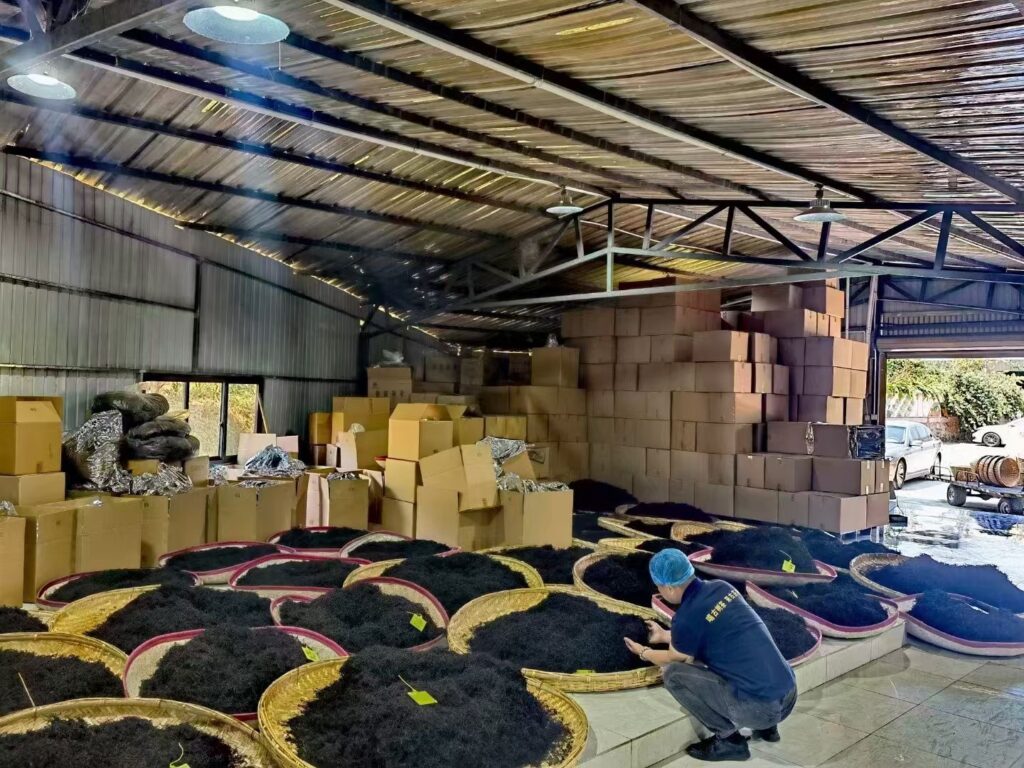
Conclusion: The Craftsmanship Behind Puerh Tea Production
The Puerh tea production process is a delicate and meticulous art that requires a deep understanding of nature and tradition. From the careful harvesting of the leaves to the aging process, every step plays a vital role in shaping the flavor profile of Puerh tea.
In the Lincang region of Yunnan, the combination of favorable growing conditions and traditional craftsmanship produces some of the finest Sheng Puerh tea in the world. The tea’s distinctive taste, enhanced by the aging process, is a testament to the dedication of the farmers and artisans who carefully cultivate and process each leaf.
Whether you are a seasoned tea lover or just beginning your journey into the world of Puerh tea, the unique flavors of Lincang Sheng Puerh offer a rich, rewarding experience that reflects the natural beauty and expertise behind every cup.
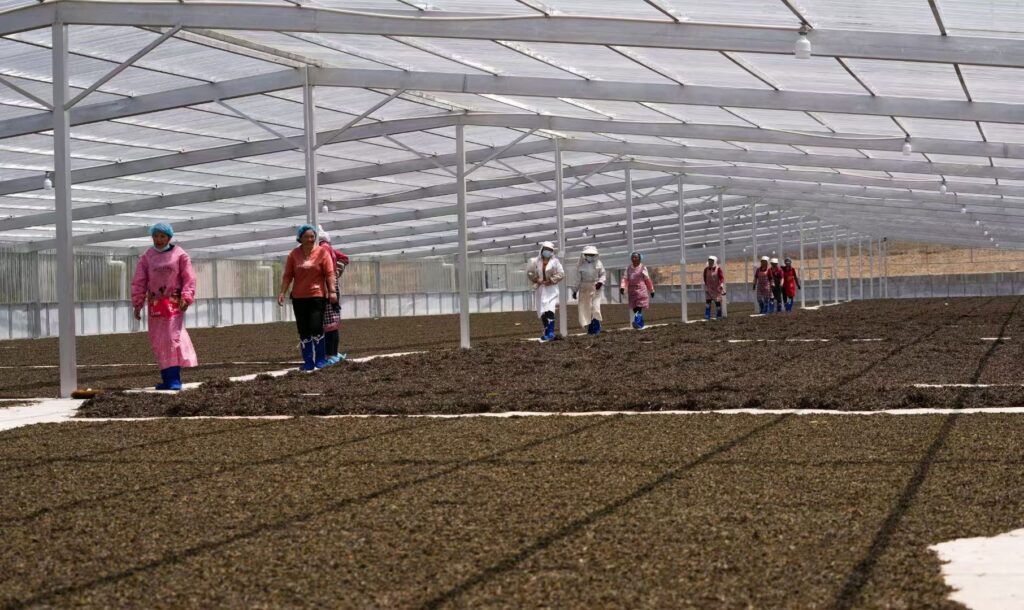
Conclusion: The Craftsmanship Behind Puerh Tea Production
The Puerh tea production process is a delicate and meticulous art that requires a deep understanding of nature and tradition. From the careful harvesting of the leaves to the aging process, every step plays a vital role in shaping the flavor profile of Puerh tea.
In the Lincang region of Yunnan, the combination of favorable growing conditions and traditional craftsmanship produces some of the finest Sheng Puerh tea in the world. The tea’s distinctive taste, enhanced by the aging process, is a testament to the dedication of the farmers and artisans who carefully cultivate and process each leaf.
Whether you are a seasoned tea lover or just beginning your journey into the world of Puerh tea, the unique flavors of Lincang Sheng Puerh offer a rich, rewarding experience that reflects the natural beauty and expertise behind every cup.
Want to learn more or explore our Puerh tea offerings?
📩 Contact Us Here – we’re happy to assist you!